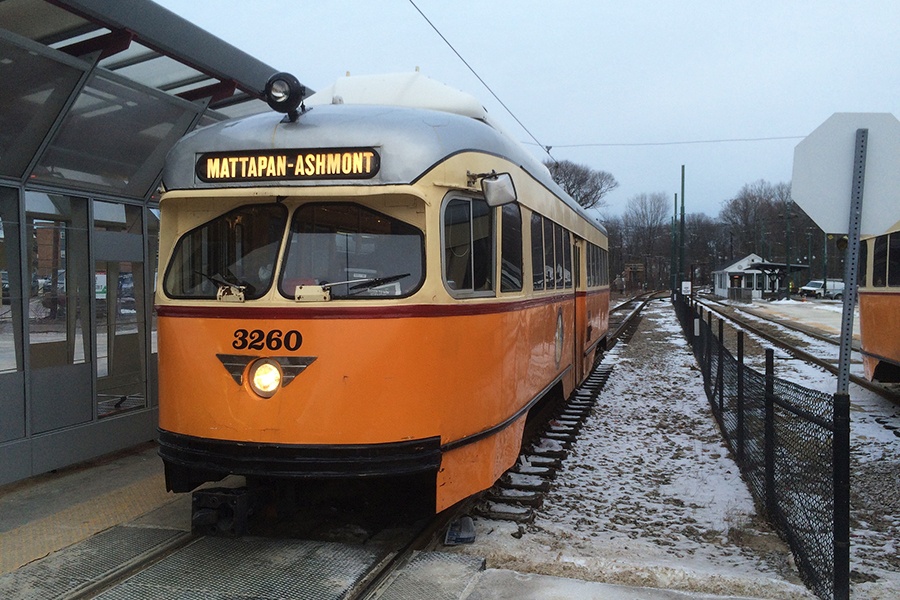There’s Trouble on the Tracks for the Mattapan Trolley
A new study points to issues that need fixing along the historic route.
Its vintage trolley cars are beloved in Boston, but it’s no secret the Mattapan Line isn’t in tip-top shape—amid recharged efforts to shorten the backlog of needed MBTA repairs, the 75-year-old trolleys pose unique challenges and often require replacement parts from museums.
But it’s not just the trolleys that pose problems for commuters in Mattapan and part of Milton, for whom the trains aren’t just charming artifacts but a crucial link between a vibrant and relatively affordable neighborhood and the rest of the MBTA. According to a partially published study of the 2.5-mile stretch at the end of the Red Line, significant repairs are required along the route as well. Like, now.
“Various elements of the infrastructure, including tracks, stations, bridges, signals, switches, and the maintenance facility, were ranked marginal or poor 41 times; fair, moderate, or functional 48 times; good 47 times; and excellent only 5 times,” reports Colman M. Herman at Commonwealth, which obtained a redacted version of the MBTA’s $1.1 million report ahead of an expected release early this year. It also points to two deteriorating bridges in need of “immediate attention” to fix wooden rail ties and other problem areas, and a dilapidated maintenance facility dubbed “barely marginal.”
The T currently has $7.9 million budgeted for repairs to the Mattapan Line, but the report suggests officials consider a couple of possibilities that would overhaul trolley service, among them replacing the antique trolleys with modern ones (possibly modeled on the iconic old-timey design) or (gasp) doing away with trolley service entirely, in favor of buses.
Neighbors can expect a meeting on the report “in early 2019,” MBTA spokesman Joe Pesaturo tells the Dorchester Reporter, adding, “The scope of the line’s comprehensive assessment included a thorough analysis of the condition of the corridor’s infrastructure, which is needed to make informed decisions regarding future capital expenditures. In the meantime, workers continue to fully overhaul the existing Presidential Conference Committee trolley cars with new propulsion, brakes, and power supply systems. This multi-million dollar investment by the MBTA Control Board will extend the life of the more than 70-year old vehicles and maintain the historical character of the distinctive orange and cream-colored cars.”
Mayor Marty Walsh has called the trolley system “an icon of our city.” He’s right, of course.
So what do we do now?
Mayor @marty_walsh calls Ashmont-#Mattapan Trolley “an icon of our city.”
“It is very important that the MBTA keeps this line running in the short term and, in the long term, implements a plan to keep trains running, with greater reliability for riders,” he says. #Dorchester https://t.co/BohW7NwUlG— Bill Forry (@BillForry) January 2, 2019


